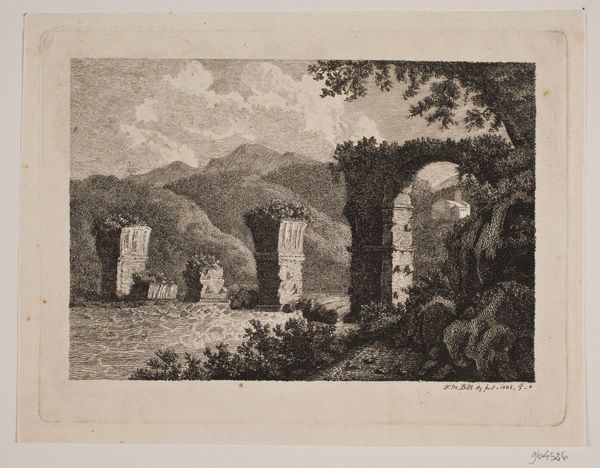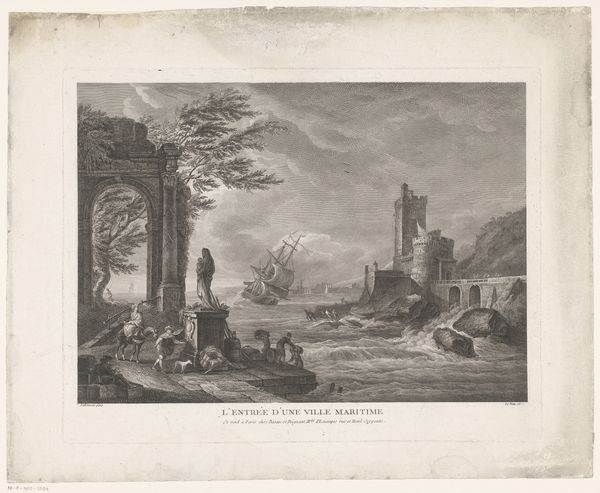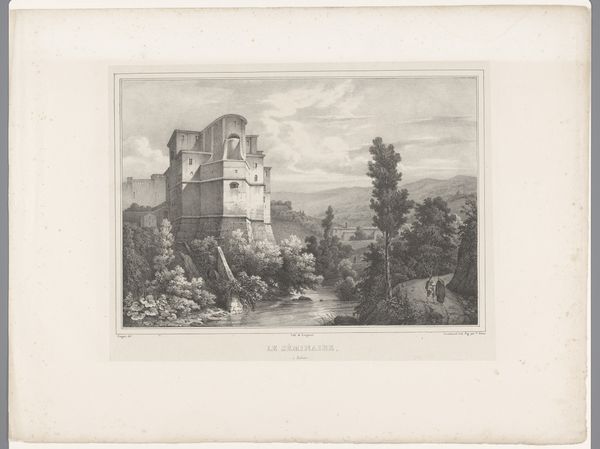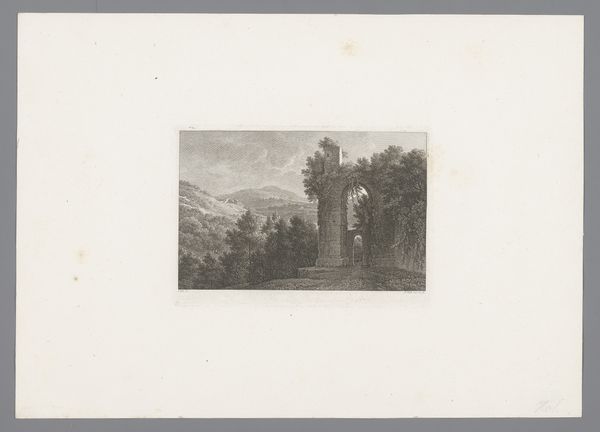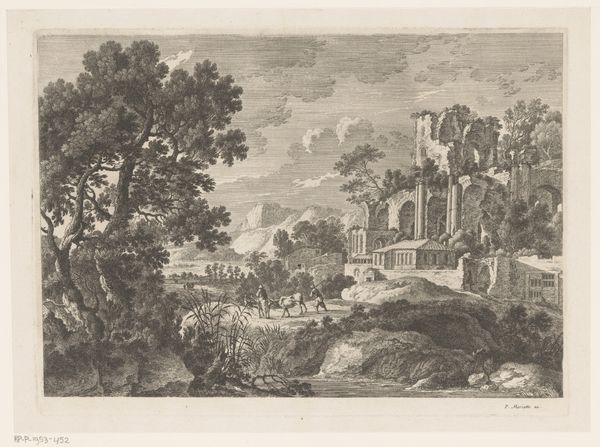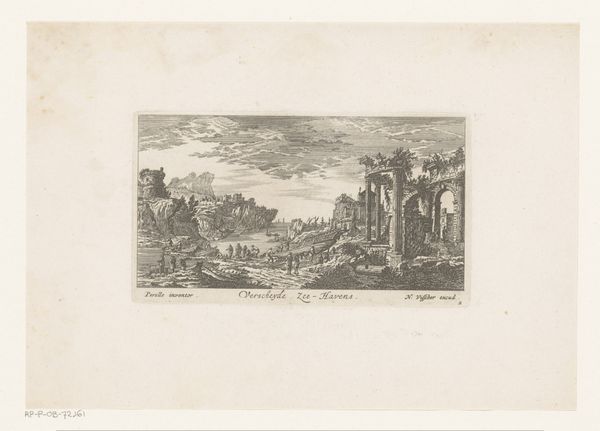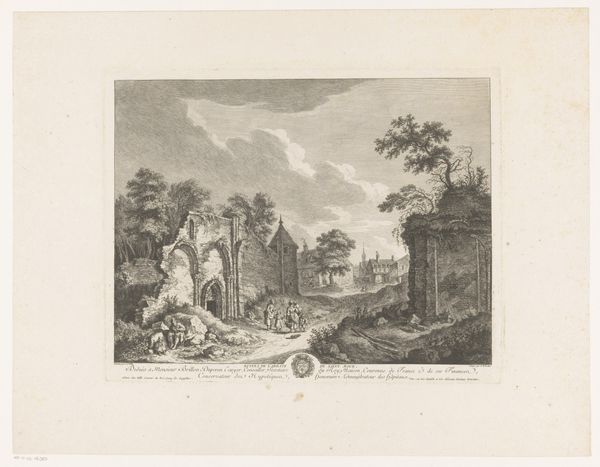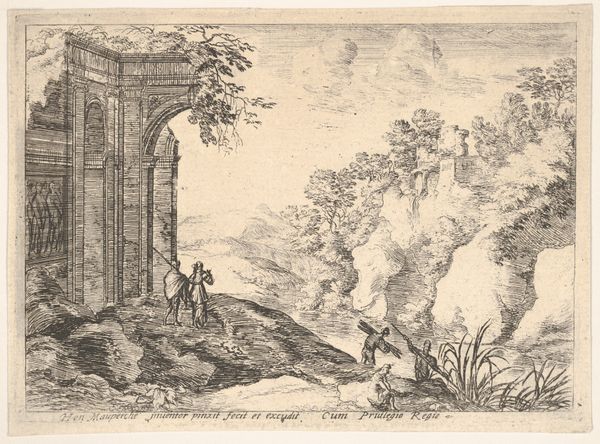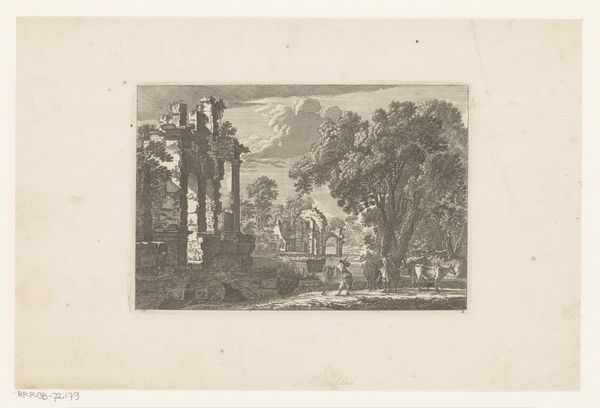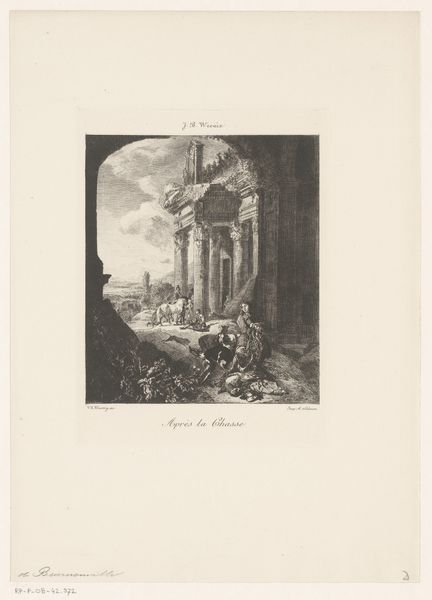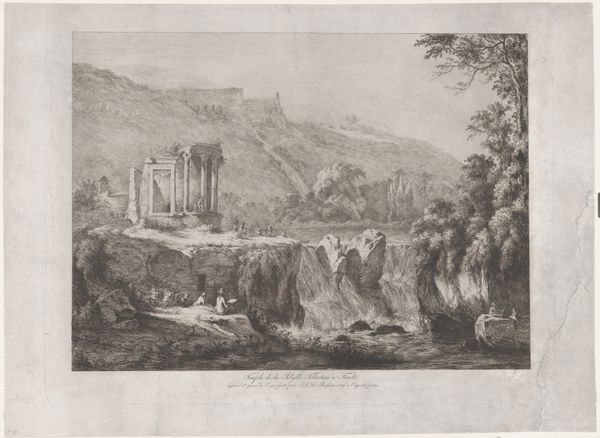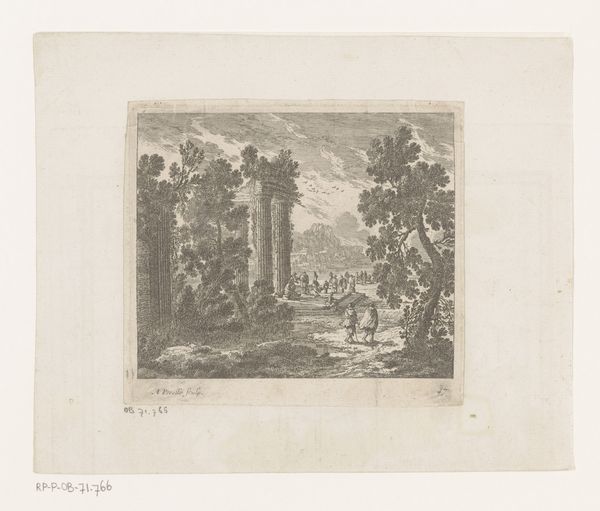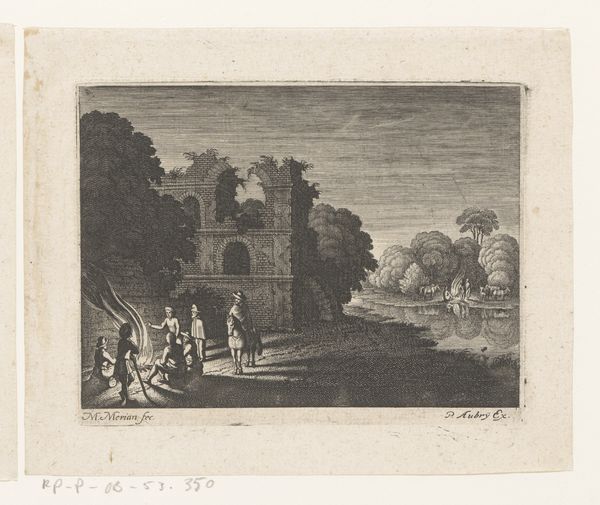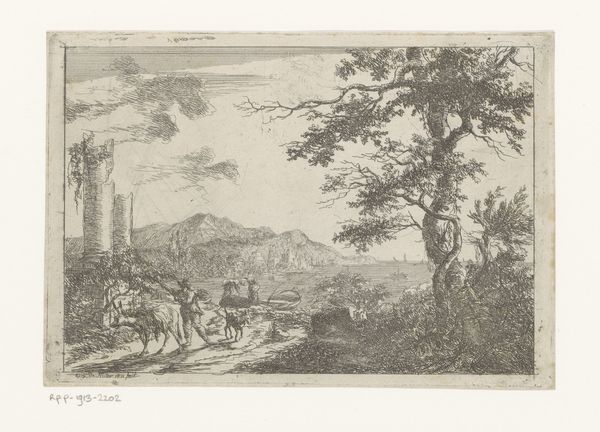
print, engraving
#
neoclacissism
# print
#
landscape
#
history-painting
#
engraving
Dimensions: height 380 mm, width 545 mm
Copyright: Rijks Museum: Open Domain
Huib van Hove made this print, ‘Italian Ruins with Figures and Animals,’ sometime in the first half of the 19th century. It’s an etching, a kind of printmaking that allowed for the relatively easy reproduction of images. Looking at this image, it’s key to remember that Italy, from the 17th century onwards, became a kind of pilgrimage destination for artists from the North of Europe. The institutions of art education in places like the Netherlands, where Van Hove was from, put a strong emphasis on the classical tradition, so Italy, with its Roman ruins, became a place for study, inspiration, and artistic tourism. Prints like this one were made for popular consumption, creating, and reinforcing, ideas about Italy. Notice how, in this image, ruins become the backdrop for everyday pastoral life. As art historians, we might look at travel writing and guidebooks from the period to better understand how Italy was viewed, and we can think about the role of images in shaping those perceptions. In this way, we can begin to understand that what we see in art is never neutral, but always tied to specific social and institutional contexts.
Comments
No comments
Be the first to comment and join the conversation on the ultimate creative platform.
